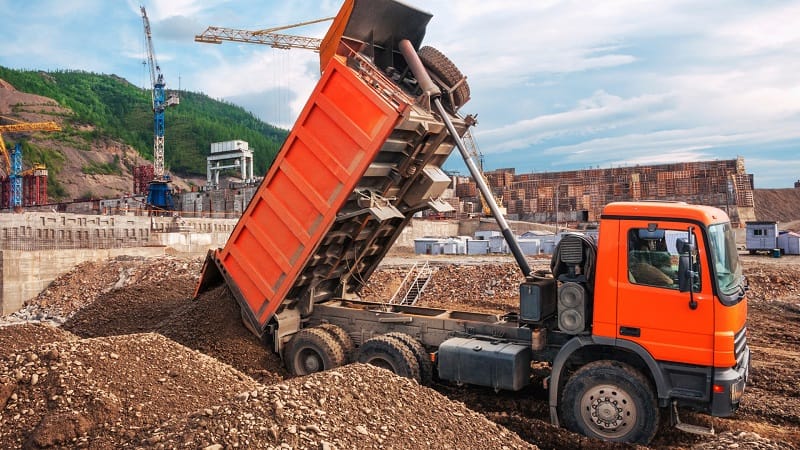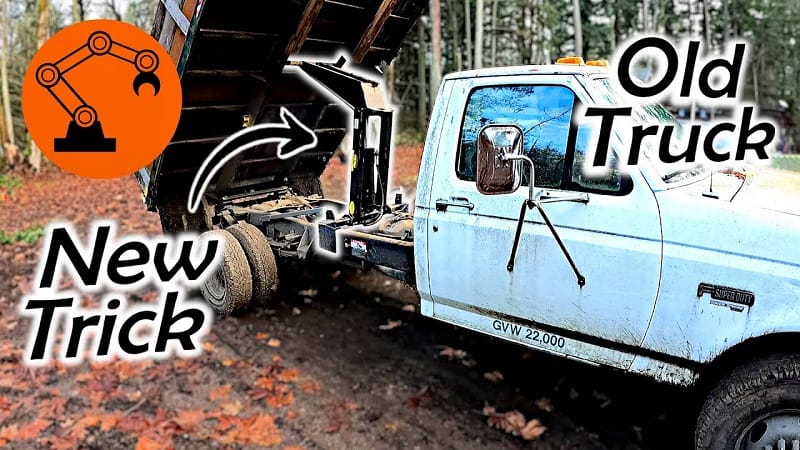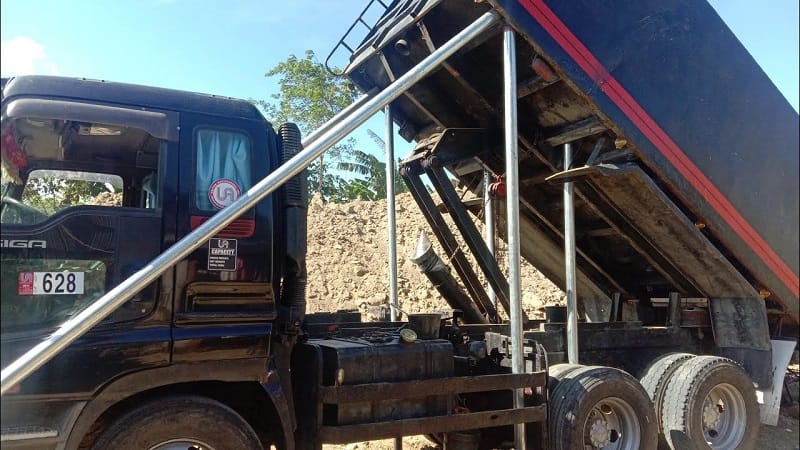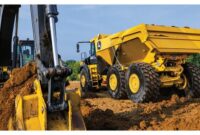1 Ton Dump Truck Hydraulic Cylinder: Function, Components, and Maintenance catdumptruck.com | A 1-ton dump truck hydraulic cylinder is a crucial component in small-scale dump trucks designed for light to moderate hauling tasks.
This hydraulic cylinder is responsible for lifting and lowering the dump bed efficiently using hydraulic pressure. Understanding how this system works, its components, and proper maintenance can help ensure long-term performance and reliability.
This article provides an in-depth look into the hydraulic cylinder of a 1-ton dump truck, covering its working principles, key components, common issues, and best maintenance practices.
Read More: Used 1 Ton Dump Trucks For Sale Near Me
Key Functions of a 1 Ton Dump Truck Hydraulic Cylinder

The hydraulic cylinder in a 1-ton dump truck serves the following essential functions:
- Lifting the Dump Bed
- Converts hydraulic pressure into mechanical force to elevate the truck bed.
- Ensures smooth unloading of materials like gravel, sand, or debris.
- Lowering the Dump Bed
- Controls the descent of the bed to avoid sudden impacts.
- Operates smoothly with regulated hydraulic flow.
- Holding Position
- Keeps the dump bed in a stable position when raised, preventing unintended lowering.
Components of a Hydraulic Cylinder
The hydraulic cylinder of a 1-ton dump truck consists of several key components:
1. Cylinder Barrel
The main body that houses the piston and hydraulic fluid.
Designed to withstand high-pressure conditions.
2. Piston and Piston Rod
The piston moves inside the cylinder, converting hydraulic energy into mechanical movement.
The piston rod extends or retracts to lift or lower the dump bed.
3. Hydraulic Seals
Prevent leaks and ensure smooth piston movement.
Made from durable rubber or synthetic materials.
4. Hydraulic Fluid Port
Entry and exit points for hydraulic fluid to flow into the cylinder.
Controlled by valves to regulate movement.
How the Hydraulic Cylinder Works
The operation of the hydraulic cylinder in a 1-ton dump truck follows a structured process:
1. Activating the Hydraulic System
The operator engages the hydraulic system using a switch or lever.
A hydraulic pump begins circulating fluid from the reservoir to the cylinder.
2. Extending the Hydraulic Cylinder
Pressurized hydraulic fluid enters one side of the cylinder, pushing the piston forward.
The piston rod extends, lifting the dump bed to unload materials.
3. Controlling Descent
After unloading, the operator reverses the hydraulic flow.
The piston retracts, allowing the dump bed to lower gradually.
1 Ton Dump Truck Hydraulic Cylinder: Function, Components, and Maintenance
Common Issues and Troubleshooting
Like any mechanical system, hydraulic cylinders in a 1-ton dump truck can experience operational issues. Below are some common problems and their solutions:
1. Slow or Weak Lifting
Causes: Low hydraulic fluid, clogged filters, worn-out seals.
Solutions: Check fluid levels, replace dirty filters, inspect seals for damage.
2. Hydraulic Leaks
Causes: Damaged hoses, loose fittings, seal wear.
Solutions: Tighten fittings, replace leaking seals, check for cracks in hoses.
3. Uneven or Jerky Movements
Causes: Air bubbles in the hydraulic fluid, contamination.
Solutions: Bleed the hydraulic system to remove air, flush and replace contaminated fluid.
4. Cylinder Stuck in Position
Causes: Blocked hydraulic valves, internal damage.
Solutions: Inspect and clean control valves, replace damaged cylinder components.
Best Practices for Maintaining
Proper maintenance helps extend the lifespan of the hydraulic cylinder and improves overall dump truck efficiency. Here are essential maintenance practices:
1. Check Hydraulic Fluid Levels Regularly
Ensure fluid levels are within the manufacturer’s recommended range.
Use high-quality hydraulic oil to prevent contamination.
2. Inspect Seals and Hoses for Wear
Look for leaks, cracks, or loose fittings in the hydraulic system.
Replace worn-out seals to prevent fluid loss.
3. Clean and Replace Filters
Regularly clean or change hydraulic filters to remove contaminants.
Use manufacturer-approved filters for optimal performance.
4. Lubricate Moving Parts
Apply grease to pivot points and joints for smooth operation.
Reduce friction to extend the life of mechanical components.
5. Monitor Cylinder Alignment
Ensure the hydraulic cylinder is properly aligned to avoid unnecessary strain.
Misalignment can lead to uneven wear and potential failure.
Conclusion
The hydraulic cylinder is a vital component of a 1-ton dump truck, enabling efficient lifting and unloading operations. Understanding how it works, recognizing common issues, and following proper maintenance routines are key to ensuring optimal performance and longevity.
By maintaining hydraulic fluid quality, inspecting components regularly, and addressing problems early, dump truck operators can prevent costly breakdowns and maximize efficiency. A well-maintained hydraulic system ensures safety, reliability, and productivity in material handling applications.
- Day Cab Tractor Truck for Sale - December 14, 2025
- Single Axle Day Cab Truck for Sale - December 13, 2025
- Tri Axle Dump Truck Fleet for Sale - December 12, 2025





